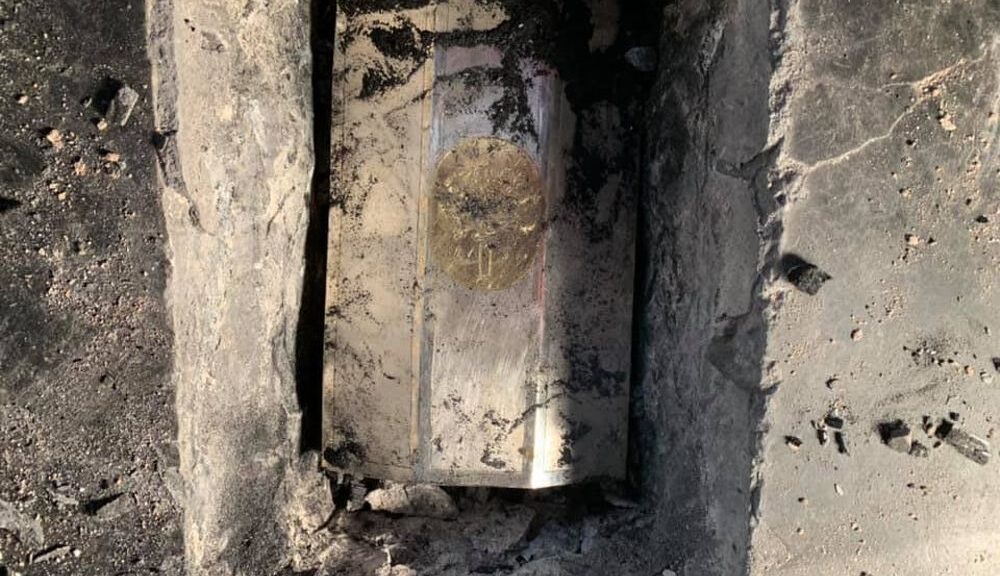Bones of 13th-century saint found hidden inside the small silver coffin
The bones of a Polish saint that have been lost for centuries have been re-discovered by chance during restoration work in a Christian basilica in Silesia.
Conservators were working on the tomb of St. Jadwiga in Trzebnica, Lower Silesia, in southern Poland when they made the chance discovery. While the tomb of the saint is well-known, her remains had been lost long ago. They were working on her stone tomb, which dates to the 17th century after a small fissure appeared on the sarcophagus.
The art conservators were working to prevent the crack from getting worse when they noticed something unusual about one of the stone slabs. Dorota Wandrychowska, an art conservator, told The First News, “When we lifted the slab we saw that charcoal mixed with plaster had been poured into a cavity, which was very strange. So, we thought we had to check it out”.

What they found was amazing. They found a tiny silver casket.
According to The First News website, the casket has “a lead tablet with an inscription confirming that the relics are those of the 13 th century saint”. The find was a complete shock to the team of conservators and the local clergy. It was assumed that the saint’s bones were somewhere in the church.
Documentary sources indicate that the saint was buried in the basilica in the 13 th century. The First News, quotes Father Piotr Filas, from the nearby abbey of Trzebnica stating “We knew that the saint’s bones were somewhere in the vicinity as they were laid there in 1679 when her tomb was built”.
It is believed that the inscription panel, which is written in Latin, was laid on the casket in 1764. Report Web reports Father Filas as saying that “we believe that nobody has taken a look at the bones since that date”.

It appears that for reasons unknown possibly because of the political instability in Poland at the time, that St. Jadwiga’s casket was forgotten. The discovery is very important in Poland which is overwhelmingly Catholic and where there are high levels of religious observance.
St. Jadwiga, sometimes referred to as St. Hedwig is a very significant figure in the history of Christianity in Poland. She was born in Bavaria, in southern Germany and entered into an arranged marriage with Henry I the Bearded, one of the first Piast rulers of Silesia.

Jadwiga was the mother of Duke Henry the Pious. She was a great patron of the clergy and encouraged many German monks and nuns to settle in the dukedom.
Jadwiga was very pious and she was much loved for her charitable work, especially her care for the sick. Like many other Christian saints, she practiced mortifications of the flesh and she frequently wore no shoes.
When her husband told her confessor to tell her to wear shoes, she obeyed. However, she wore her shoes around her neck and continued to walk around barefoot.
When her husband died in 1238, she retired to a convent in Trzebnica but briefly left it to end conflict among her feuding children. One of her sons was killed fighting the Mongols.
Many miracles are attributed to the saint and according to Report Web “Jadwiga became a saint on March 26, 1267, when Pope Clement VI performed her canonization”. Today she is regarded as the patron saint of Silesia and one of the most popular saints in all of Poland.
The rediscovery of the saint’s remains is seen as highly significant to the faithful. Report Web quotes Father Filas as saying that “I think it is a sign for us that she can be a patron for our modern times”.
Many Catholics may view the discovery as a sign that the saint is protecting them in a very troubling time. There are some suggestions already being put forward regarding the eventual fate of the remains.
